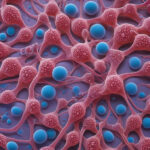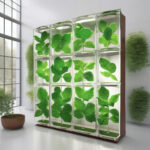3D-Printed Wheat Straw Fibers: A Sustainable Alternative for Insulation Needs
Wheat straw could be used as a sustainable alternative to regulate temperatures in homes and buildings, offering a promising solution for eco-conscious individuals and businesses. With the rise of environmental awareness and the increasing demand for sustainable practices in various industries, the utilization of wheat straw fibers in 3D printing for insulation purposes has gained traction in recent years. This innovative approach not only addresses the need for energy-efficient solutions but also tackles the issue of agricultural waste management.
Traditionally, insulation materials are manufactured using synthetic fibers or mineral wool, which are not environmentally friendly and can have adverse effects on both human health and the planet. In contrast, wheat straw fibers are a renewable resource that is readily available as a byproduct of wheat production. By converting this agricultural waste into insulation material through 3D printing technology, we can significantly reduce the carbon footprint associated with traditional insulation manufacturing processes.
One of the key advantages of using 3D-printed wheat straw fibers for insulation is their excellent thermal performance. These fibers have natural insulating properties, effectively trapping heat during the winter months and keeping indoor spaces cool in the summer. As a result, buildings equipped with wheat straw insulation require less energy for heating and cooling, leading to reduced utility bills and lower greenhouse gas emissions.
Moreover, 3D printing allows for the precise customization of insulation materials to fit specific architectural designs and building requirements. This level of flexibility and adaptability is crucial for maximizing energy efficiency and ensuring the overall sustainability of a structure. Whether it’s a residential home, commercial building, or industrial facility, 3D-printed wheat straw fibers can offer a tailored insulation solution that meets the needs of the project while minimizing environmental impact.
In addition to their thermal performance and customizable nature, wheat straw fibers are also non-toxic and safe for installation. Unlike some conventional insulation materials that may contain harmful chemicals or allergens, wheat straw insulation is a natural and biodegradable option that promotes indoor air quality and occupant comfort. This makes it an ideal choice for eco-friendly construction projects and green building certifications.
As we continue to explore innovative ways to reduce our reliance on conventional resources and mitigate the effects of climate change, 3D-printed wheat straw fibers stand out as a promising solution for sustainable insulation needs. By harnessing the power of agriculture waste and advanced manufacturing technologies, we can create a more resilient and environmentally conscious built environment for current and future generations to enjoy.
In conclusion, the combination of wheat straw fibers and 3D printing technology offers a sustainable alternative for homes and building insulation that aligns with the principles of circular economy and green construction practices. By investing in eco-friendly insulation solutions like these, we can move closer to achieving a more sustainable and harmonious relationship with our planet.
#3DPrinting, #SustainableLiving, #GreenConstruction, #WheatStrawFibers, #EcoFriendlyInsulation












